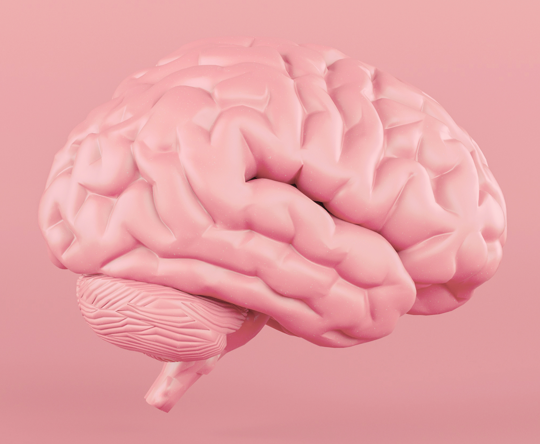Here’s why tears are important for normal functioning and eye health
In addition to elderly patients, in outpatient clinics we increasingly see younger and middle-aged patients who spend most of their working time at the computer, in air-conditioned rooms during the summer and with central heating in winter. Most often, patients complain of itching and irritation of the eyes, foreign body sensation and redness, and even of pain and intense photophobia in advanced cases. Sometimes patients exhibit epiphora more intensely which is why they find it hard to believe they have a dry eye, warns Ivana Radman, MD, ophthalmologist at University Hospital Centre “Sestre milosrdnice”, who also looks at how the pandemic brought on an increase in dry eye disease.
The World Health Organization estimates that out of the 2.2 billion people suffering from eye diseases worldwide, for at least a billion of them the disease could have been prevented. Apart from aging and genetic predispositions, eye health is influenced by many other factors we have control over ourselves, thus preventing disease and improving our health. This is why leading ophthalmologists, neurologists, endocrinologists, psychiatrists, rheumatologists, otorhinolaryngologists, plastic surgeons, general practitioners, pharmacists and engineers are brought together at X-Lab — the expert research hub by JGL — to analyse the latest research and, by applying a holistic approach, to share with us how to take care of our eye health and why that is important for our whole bodies.
1 How can we recognize dry eye and in which cases does it occur most often?
Dry eye syndrome leads to reduced secretion of tears or to a decrease in their quality. Dry eye is a common and chronic problem of the elderly, and it is increasingly occurring in younger people due to today’s lifestyle. With each blink of the eyelid, tears spread across the front surface of our eye and provide lubrication, reduce the risk of infection, remove foreign bodies from the eye surface, keep the eye surface smooth and clear and supply them with oxygen and nutrients. If we do not blink often enough, dry areas will form on the surface of the eye and visual acuity may be reduced. When the normal amount of tears decreases or when the tears evaporate too quickly, symptoms of dry eye may develop.
2 Why are tears so important for normal functioning and eye health?
The tear film consists of three layers: the lipid layer, aqueous layer, and the mucin layer. Each component protects and nourishes the front surface of the eye. The smooth lipid layer prevents the evaporation of the aqueous layer and evenly distributes the tears on the surface of the eye, this is secreted by the Meibomian glands. The middle aqueous layer, produced by the main and accessory lacrimal glands, consists of electrolytes, proteins, enzymes, and immunoglobulins. Lysozyme is the most prevailing glycolytic enzyme that has antibacterial activity. Adjacent to the surface of the cornea and the corneal connective tissue is the inner layer of mucin which is the product of the goblet cells of the connective tissue. Its role is to moisturize and further stabilize the tear film. If tears evaporate too quickly or are unevenly distributed throughout the cornea due to deficiencies in any of the three layers of tears, symptoms of dry eye may develop.
3 What are the most common causes of dry eye when it comes to our daily habits at home and at work?
The underlying cause of dry eye is most commonly associated with Meibomian gland dysfunction. We distinguish two types of dry eye: hyposecretory and hyperevaporative. Hyposecretory dryness as a result of decreased tear production most often occurs as a result of aging due to hormonal changes in both sexes, but it more commonly affects menopausal women while taking hormonal therapy. It also occurs in systemic and autoimmune diseases such as rheumatoid arthritis, Sjögren’s syndrome, thyroid disease and lupus, and as a side effect of certain medications (diuretics, antihypertensives, antihistamines, antidepressants, and sleeping pills).
Causes of hyperevaporative eye dryness are prolonged wearing of contact lenses, spending time in dry, dusty or windy climates, in air-conditioned or centrally heated areas, which can reduce tear volume due to their increased evaporation. Eye dryness is also caused by reduced blinking when spending long hours at the computer, prolonged reading, watching television or driving a car, and is also caused by changes in eyelid position and their condition due to inflammatory and scarring changes such as lagophthalmos, entropy, ectropion and inadequate surgical eyelid correction. The iatrogenic type of dry eye as a result of laser vision correction or cataract surgery is in most cases a temporary dryness that disappears within a few weeks after the procedure with the use of preservative-free artificial tears.
4 What symptoms should we respond to immediately?
In addition to elderly patients, in outpatient clinics we increasingly see younger and middle-aged patients who spend most of their working time at the computer, in air-conditioned rooms during the summer and with central heating in winter. Most often, patients complain of itching and irritation of the eyes, foreign body sensation and redness, and even of pain and intense photophobia in advanced cases. Sometimes patients exhibit epiphora more intensely which is why they find it hard to believe they have a dry eye. This paradox is due to the fact that only one layer of the tear film is damaged, i.e., there is an increased production of one tear layer with insufficient production of the other two layers of the tear film. If you spend time in a particularly windy environment without proper protection, the rapid movement of air could cause the water component of the tear film to evaporate faster than usual, which can lead to symptoms of dry eye.
Numerous studies have examined the connection between environmental factors and the impact on tear film composition and on superficial ocular components. These effects are due to the environmental agents impacting the surface receptors of the eye membrane, leading to proinflammatory signalling processes. It is important to identify these factors in order to reduce symptoms and adapt to your everyday work environment or conditions at home. You should limit your stay in air-conditioned, smoky and dusty areas and try to reduce the hours you spend at the computer.
5 Is there a link between COVID-19 and dry eye?
Studies have shown that dry eye is more common in people with COVID-19 than in people without unaffected by COVID. Dry eye or a foreign body sensation in the eye was the most common eye symptom. It is not yet clear why COVID-19 brings about dry eye. SARS-CoV-2 which causes COVID-19 is thought to enter human body cells via angiotensin-converting enzyme 2 (ACE2). ACE2 has been identified in epithelial cells that cover the surface of the eye. Also, studies have shown that the body’s immune response to inflammatory processes can contribute to dry eye. In theory, if the coronavirus enters the cells around the eyes, it could reduce the body’s ability to keep their surface moist.
6 How is dry eye treated?
The first step to treatment includes preservative-free artificial tears, which increase the volume of the tear film. They consist of water, sodium hyaluronate, electrolytes and lubricants that mimic the natural composition of tears. It is recommended to apply these drops frequently during the day. In addition to artificial tears, a gel is also used, which is usually prescribed for evening use because it blurs vision in order to ensure sufficient eye moisture and reduce discomfort during sleep. Topical treatment with mild corticosteroids can reduce inflammation, and sometimes the use of broad-spectrum antibiotics is needed to cure inflammation of the edges of the eyelids that causes tear dysfunction. Daily eyelid hygiene using sterile wipes with active ingredients, and/or massaging your eyes with dry, warm compresses is also recommended. Topical application of cyclosporine or an autologous serum is prescribed in severe cases of dry eye. Amniotic membrane transplantation is performed in the most severe forms of corneal damage caused by dry eye. There is also the possibility of installing tear plugs to slow down the drainage of tears from the eye.
QUIZ
SUFFERING FROM DRY EYE SYNDROME? ANSWER THESE QUESTIONS AND FIND OUT HOW TO PREVENT IT AND WHAT TO DO WHEN YOU ARE ALREADY FEELING THE SYMPTOMS
QUIZ





